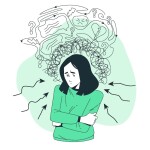Team cohesion forms the backbone of any successful organization. While individual brilliance and talent are essential, bringing that talent together to create something unique and work toward a common goal drives the organization toward success. In this blog, we will discuss team dynamics, why they are essential, and how you can improve them to create a cohesive, high-performance team that accomplishes remarkable outcomes.
Team Dynamics
Team dynamics represent the patterns of group interaction , communication, and collaboration. These help to influence how well individuals within a team can work together and, therefore, their effectiveness in a group. Good team dynamics involve mutual respect, trust, open communication, and collaboration. Poor team dynamics could mean inefficiencies, misunderstandings, and conflict.
Let's understand using an example. Imagine a sports team: the reason every member of the team has particular talents and strengths is that it's how well they play together, anticipate each other's movements, and communicate out there that will determine their victories. For teams at work, the same thing really applies-if they are in sync, know their roles, and trust each other, and they have much more potential to succeed.
Indicators of Good Team Dynamics
- Everybody's voice is heard and valued: Everyone can express their thoughts, and voices are encouraged.
- Communication is constructive and clear: The feedback is constructive in nature and aimed at improvement, not judgment or accusation.
- Trust is evident: Everyone feels that his or her colleagues are working towards the same thing and looking after each other.
- Shared vision: All members know the purpose or goal of the team and work towards achieving it.
Signs of Bad Team Dynamics
- Poor team dynamics can prevent progress and ultimately become frustrating. Out of the above, some common warning signs include:
- Recurrent miscommunications or lack of clarity. Members are excluded in an important discussion or do not know what is expected of them.
- Lack of involvement or even going into conflict. The disagreement would turn personal or even unproductive and productive discussions.
- No accountability in roles and tasks, ownership and therefore ineffective.
- Individuality is better than teamwork. Team members who shine at an individual level than a group outclass the former who don't and undermine team operations.
Why Strong Team Dynamics Matter
Indeed, good team dynamics are crucial. Good team dynamics can leverage synergy toward remarkable potential that might not be possible with individual outcomes. Here are some key reasons why good team dynamics are essential:
1. Increased Innovation
Teams feel comfortable and share creative ideas, even taking risks, when they trust one another. People take pride in hearing the voice of everyone in an environment that takes corrective criticism. In this way, people are much more likely to think outside the box-think beyond creating new and innovative solutions to a problem.
2. Enhanced Problem Solving
The more diverse the perspectives, the more open communication, the better prepared to deal with complex problems. The combination of different perspectives and skill sets hunts for the solution that would be more effective than any of them could have conceived of on his own.
3. More Engagement and Motivation
When a person feels that he or she belongs to a team and that his or her input matters, then he or she is sure to work harder in any job. Such a feeling of belonging and purpose compels him or her to perform better, increasing engagement and productivity.
4. Efficiency
A well-coordinated team delegates activities so that there is little overlap and confusion. When team members know their roles and how they fit into the scheme of things, the team functions seamlessly to meet set timelines and ultimately achieve goals and objectives on time.
How to Improve Team Dynamics
Team dynamics improvement is not something that overnight occurs; it has to be collectively improved, thoughtfully led, and committed to the development environment. The following are a few practical strategies to improve team dynamics and get that cohesive productive team:
Open Communication
Open communication is the foundation of any strong team. Free communication makes it easy for team members to post their thoughts, share feedback, and work out ideas. This fosters less miscommunication but maintains strong relationships among the team members.
How to practice open communication:
- Hold regular meetings with the team where everyone is encouraged to let out their thoughts, challenges, and ideas.
- Use communication tools like Slack or project management applications to keep people informed and connected.
- Practice active listening where everyone feels heard and valued.
Develop Trust and Psychological Safety
Trust is the backbone of healthy team dynamics. When team members come together from trust, they feel risk-free, free to make mistakes without fear of judgment, and free to share their opinions. Feeling confident that your contribution will be supported by the team rather than rejected instills psychological safety, promotes innovation, and encourages openness.
How to build trust and psychological safety:
- Be transparent in decision-making, and keep open lines of communication.
- Enable team members to assume responsibility for completing their work and have faith that they will know what has to be done.
- Handle staff conflicts personally and constructively, so that issues don't emerge later with anger.
Well-defined roles and Responsibilities
The unclear role causes confusion, duplicated effort, and frustration. Each member of the team should know what is expected of them and how their work fulfills an action in service of the rest of the team's objectives. Clarity minimizes room for miscommunication and allows work to be executed correctly.
How to define roles and responsibilities:
- Clearly communicate to each member what the roles mean about their specific tasks and expectations
- Use task management tools to assign tasks and track progress where accountability can be held.
- Review the roles to the team regularly so that they continue to align with the needs and goals of the ever-changing team.
Encourage Collaboration, Not Competition
The benefits of a little healthy competition, that is. Too much healthy competition can wear away at trust and fail to encourage group cooperation. Teams should be encouraged to work together, share their knowledge, and further the same goal together. When people feel they serve something bigger than themselves, they tend to give more of themselves.
How to encourage collaboration:
- Cross-functional teamwork and collaborative projects.
- Provide scope for wide distribution of resources and information within the teams.
- Teams are rewarded based on team results rather than individual achievements.
Establish a Positive Team Culture
A positive culture is one in which people feel valued, motivated, and supported. This kind of culture is significant to the power and establishment of the right team dynamics. Celebrating successes and contributions and creating a fun yet productive work environment all contribute to improving a positive culture, hence enriching team morale and cohesion.
To promote a positive team culture:
- Recognize and celebrate the milestones of the team and individual contributions.
- This includes the maintenance of a work-life balance and respect for each other's personal boundaries.
- Team-building opportunities, both in and outside of the workplace, can develop relationships and camaraderie.
Deal with Conflict with Care
Conflict is necessary in any form of group dynamics but does not have to be destructive. If managed well, conflict can, in fact, lead to growth and stronger bonds. It is a question of where problems are addressed early enough and constructively so that we search for solutions and not blame.
How to handle a conflict effectively:
- Deal with disputes as they arise rather than letting them mold, aligning interests and seeking a collaborative solution while debating.
- Encourage empathy, active listening, and mutual respect during conflicts.
The Power of Building Together
At the heart of any productive team stands the fact that the whole is greater than the sum of its parts. Such teams operating in collaboration, trust, and mutual support can collectively achieve far more than any individual could possibly accomplish alone. When team dynamics are hot, the team itself becomes much more than just a collection of some individuals-it becomes a united force working toward a common goal.
Building up that team dynamic is a process that needs to be maintained, requiring effort, attention, and a sense of commitment from the leadership and the team members in order to grow. But the pay-off—innovation, efficiency, engagement, and success—is well worth the investment in efforts to build up the team dynamic.
Therefore, continuing to build or lead a team, remember one of the most important factors you can do is foster positive team dynamics. A working team will become unstoppable when its members are empowered and valued to collaborate. Together, let us build and create teams that thrive on shared success, mutual trust, and collaboration.
Solh understands. We offer a variety of features to help you invest in self-care.
Journaling for Self-Reflection: Sometimes, not being able to care for yourself can come from a lack of self-understanding. Solh's journaling feature allows you to explore your thoughts and feelings in a safe space. By reflecting on your experiences and desires, you can gain clarity on what is stopping you from self-care.
Anonymous Support Groups: You are not alone. Solh's anonymous support groups connect you with others who understand the struggle. Share your experiences, find comfort in solidarity, and discover new perspectives on overcoming the hurdle to indulge in self-care.
Solh Buddy: Feeling lost or disconnected? Your Solh Buddy, a personalized virtual companion, is here to provide encouragement and support along the way. It can offer prompts, celebrate your victories, and remind you of your strengths as you navigate the journey toward self-care.
Talk now: Sometimes, self-care can make you feel overwhelmed. Solh's Talk Now feature gives you access to dedicated counselors who can help you navigate such situations.
Solh believes in a unique approach to introducing self-care. We empower you to take charge of your well-being by offering a variety of tools. Explore Solh today and discover the power of self-reflection, connection, and support in overcoming any problem of the mind. You are not alone on this path








